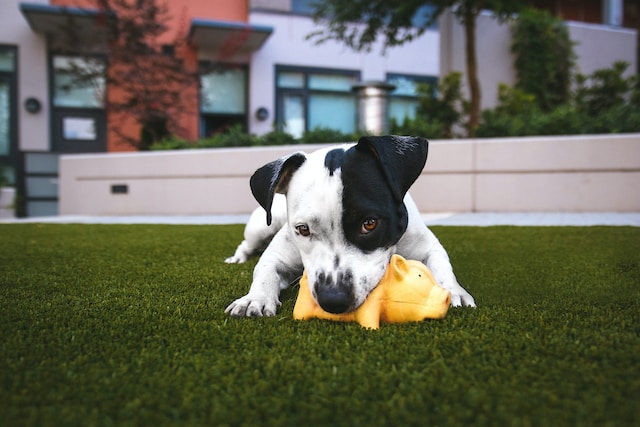Artificial grass is a popular alternative to traditional grass and is commonly found across UK gardens.
The thing is:
Artificial grass requires minimal maintenance and comes in a variety of colours and grass types. An endlessly versatile solution, it’s it can be used to complement pretty much any garden design.
So, if you’re thinking about buying artificial grass but not entirely sure how to go about it, you’ve come to the right place!
At Landscaping Superstore, we decided to take a deep dive into the features and benefits artificial grass, so you have a better understanding of how to choose artificial grass.
Let’s crack on!
Table of contents:
- Why should you choose artificial grass?
- Artificial grass sizes
- The cost of laying artificial grass
- How to choose artificial grass
- Laying artificial grass
- How often should you clean artificial grass?
- What to clean artificial grass with?
- How to clean artificial grass
- How to remove stains from artificial grass
- Final thoughts
Why should you choose artificial grass?
Artificial grass offers a multitude of benefits, with its low-maintenance feature being one of the most renowned. This ensures a consistently attractive lawn that is both efficient and requires minimal effort to upkeep.
Its practicality has led to increased popularity, and it is now available in various styles, making it an excellent choice for those seeking a truly distinctive garden landscape.
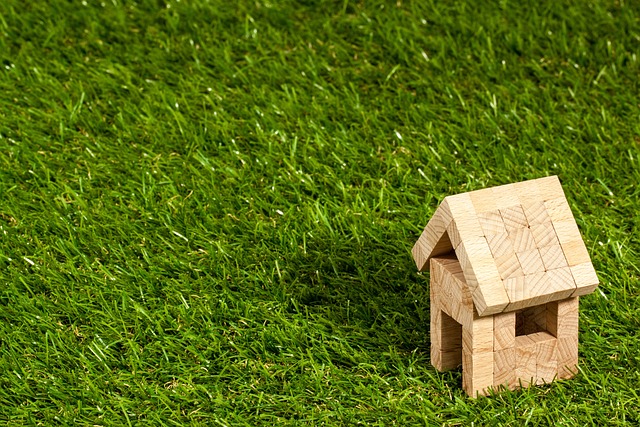
Advantages of artificial grass
The benefits of artificial grass extend beyond low maintenance, encompassing a range of practical qualities:
- Contemporary aesthetics
- Durability
- Elimination of grass stains and muddy footprints
- Seamless integration with the natural lawn look
- Easy cleaning
- Freedom from lawn mowing
- Rapid drainage capability
- Versatility for small or irregularly shaped areas
- Application on both hard and soft surfaces
- Well-suited for shaded areas
- Child and pet-friendly attributes
Artificial grass sizes
Artificial grass rolls typically come in standard widths of one or two metres, with varying lengths to suit your requirements. For optimal results, we recommend choosing a larger size than strictly necessary, especially when dealing with angles, corners or irregularly shaped areas. This approach minimises seams and contributes to a polished, professional appearance that will take your garden to the next level.
Original sizes are suitable for smaller spaces like gardens or balconies and are often pre-cut for your convenience. Utilising these sizes results in a more manageable artificial grass roll, facilitating an effortless finish with fewer seams.
Consider the installation of artificial grass akin to fitting wallpaper. Lay the rolls lengthwise and aim to acquire them from the same batch for consistency, authenticity and a tidy overall finish.
| Width | ||||
| 2000mm | 4000mm | |||
| 13mm | Putting Green Pro 13mm Artificial Grass/linear metre | Putting Green Pro 13mm Artificial Grass/linear metre | ||
| 15mm | Prime Colours 15mm Artificial Grass/linear metre | Prime Colours 15mm Artificial Grass/linear metre | ||
| Pile Height | 30mm | Quest 30mm Artificial Grass/linear metre Forte Lido Plus 30mm Artificial Grass/linear Metre | Quest 30mm Artificial Grass/linear Metre Forte Lido Plus 30mm Artificial Grass/linear metre |
|
| 35mm | Forte Fantasia 35mm Artificial Grass/linear metre | Forte Fantasia 35mm Artificial Grass/linear metre | ||
| 36mm | Forte Fashion 36mm Artificial Grass/linear metre | Forte Fashion 36mm Artificial Grass/linear metre | ||
| 40mm | Forte Wisdom 40mm Artificial Grass/linear metre | Forte Wisdom 40mm Artificial Grass/linear metre |
Now that we know what artificial grass sizes are available, let’s take a closer look at the overall costs.
The cost of laying artificial grass
The price of artificial grass can range from as low as £5 per square metre to as high as £80 per square metre. This variation in cost is primarily influenced by the supplier and the specific type of artificial grass selected.
When considering the total cost, including installation, bear in mind that it typically ranges from a few hundred to potentially several thousand pounds. The exact amount will ultimately depend on the size of the garden undergoing artificial grass installation.
How to choose artificial grass
Start by defining your desired outcome!
Consider whether you prefer dense, thick and lengthy artificial grass. Decide on the colour that best suits your preference, whether it’s a natural shade or a contemporary choice like black or red. With multiple options available, you’ll be spoiled for choice.
If you’re installing artificial grass in high-traffic areas, opt for a more durable product to ensure long-lasting use.
Here are a couple more factors to consider:
Pile height
The pile height, or length of the artificial grass, can be categorised into two common types – a well-maintained short lawn or a more natural, bush-styled appearance.
Colour selection for artificial grass
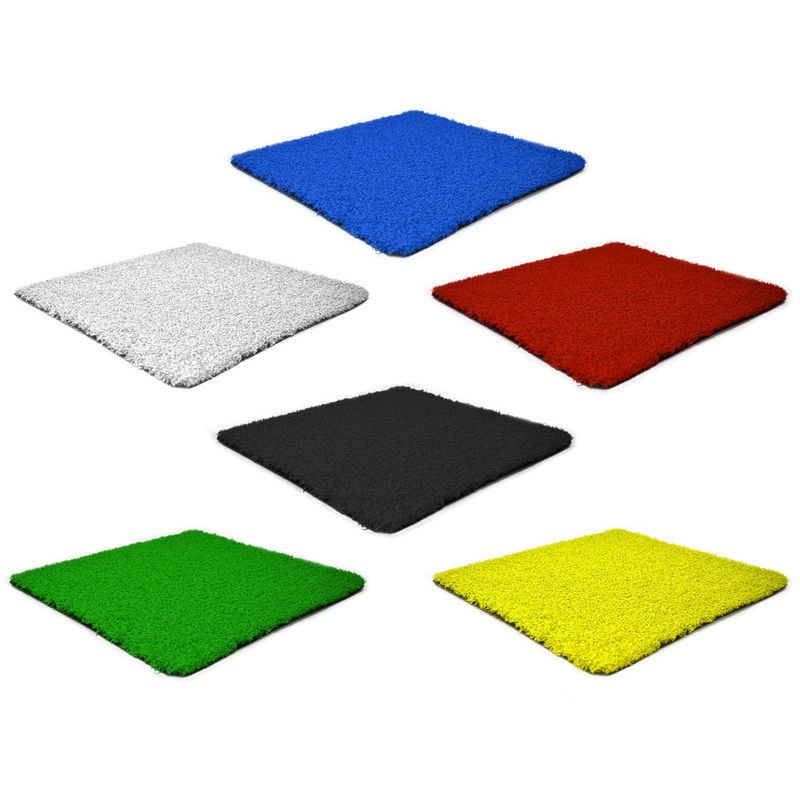
While artificial grass is traditionally sought for its various shades of green, contemporary options include non-traditional colours such as yellow, blue, purple and more. Non-traditional colours provide an excellent alternative to classic green, injecting personality or complementing other hues in your outdoor space.
Pet-friendly artificial grass
Artificial grass is an excellent solution for homeowners with pets. Cleaning is effortless with disinfectant, and specialised brushes are available to keep it free from debris. In addition, it’s a safe and practical choice for both pet owners and their animals. Explore how to maintain your artificial grass when you have pets to ensure its longevity and cleanliness with our dedicated guide.
Laying artificial grass
Ever wondered what lies beneath artificial grass? As it turns out, the versatility of artificial grass allows it to be laid on various surfaces, including concrete, decking or paving.
However, for enhanced comfort, consider incorporating an underlay. A thicker underlay, for instance, is ideal for gardens frequented by active children, providing a softer surface for potential falls. If you prefer a low-maintenance option, artificial grass can be laid over existing lawns. This approach is particularly convenient for those who wish to avoid regular lawn upkeep.
To combat weed issues, fit a weed control fabric beneath the artificial grass. This helps disrupt weed growth and prevents them from penetrating the surface. Additionally, there’s the option of using a weed killer specifically designed for artificial grass. Artificial grass has found practical applications in commercial areas, schools and nurseries, enhancing outdoor learning experiences for both students and teachers.
Here’s a handy tip for the installation process:
Experts recommend applying a thin layer of sand to anything with a pile height over 30mm. This not only adds stability by increasing weight but also lifts the pile. Ensure the sand is brushed in thoroughly to maintain a seamless appearance, with approximately five kilograms of sand per square metre for optimal results. This consideration is particularly relevant when choosing the pile height during installation.
How often should you clean artificial grass?
We recommend that you clean fake grass on a weekly or monthly basis. Regular weekly assessments are advisable due to the swift accumulation of debris such as dead leaves or mud. For a more thorough monthly cleaning, focus on a deep clean to target any bacteria or random growth on the surface of the turf.
The thing is:
This practice not only ensures a child-friendly environment but also maintains a pet-friendly space. It’s noteworthy that many types of artificial grass are designed to be self-cleaning, reducing the need for daily cleaning tasks.
What to clean artificial grass with?

Maintaining the appearance of your artificial grass requires a regular cleaning routine. While home remedies have been commonly used, they may not be the most efficient solution for achieving a pristine look.
As a matter of fact, opting for an artificial grass cleaner proves more effective in tackling bacteria and random growth on the turf. Its application is straightforward, as it can be easily applied and rinsed down after use.
It’s worth noting that certain artificial grass products incorporate sand infill, influenced by factors such as the pile height of the grass and the positioning of the blades.
How to clean artificial grass
Cleaning artificial grass involves various methods, addressing a range of elements such as liquids, dirt, debris and sticky substances.
Tools you’ll need
The tools required for artificial grass cleaning or maintenance tasks vary depending on the specific project at hand. So, it’s essential to identify the maintenance project before acquiring specific tools.
With that in mind, here’s a concise list of tools that may be needed for artificial grass maintenance:
- Plastic leaf rake
- Soft brush
- Artificial grass-friendly cleaning solution
- Damp cloth or kitchen roll
- Garden knife for scraping off sticky debris
Once you’ve got everything handy, it’s time to get on with it! The basic steps are as follows.
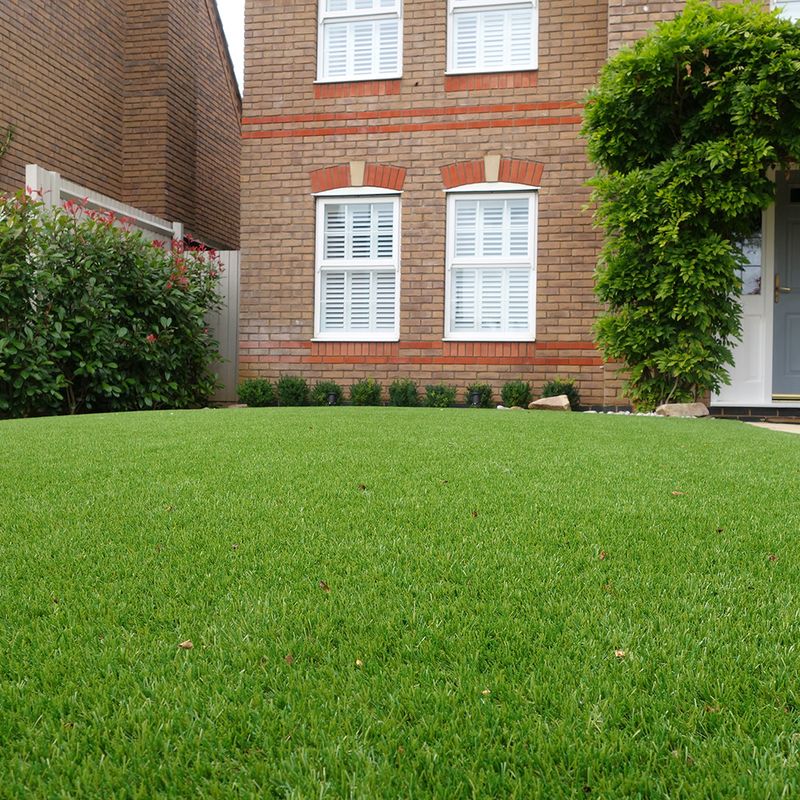
Step 1: Debris management and weed control
Gently use a knife to scrape off any sticky debris, moving it upward to prevent cutting the grass blades. Keep in mind that weeds may develop within the grass. If that’s the case, use a suitable weed killer for artificial grass or a weed removal tool to carefully eliminate them.
Step 2: Debris removal and pet hair prevention
Use a soft plastic rake or brush to gently run over the grass, removing debris without causing damage. Alternatively, a petrol leaf blower can swiftly eliminate debris and leaves. If you’re a pet owner, regularly follow this step to prevent fur buildup, which can lead to drainage issues.
Step 3 (optional): Snow removal and ice protection
In the unlikely event of snow buildup, use a plastic snow shovel to remove it. Avoid using a metal snow shovel to prevent damage to the grass. Luckily, the durable material of artificial grass typically makes it resistant to ice-related damage.
How to remove stains from artificial grass
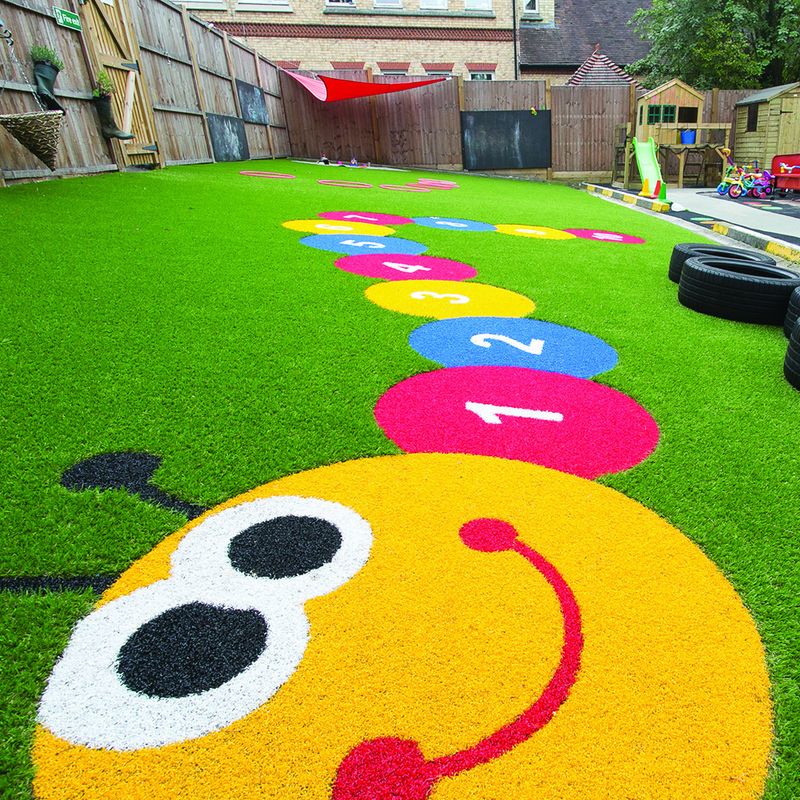
Dealing with various stains, from pet-related incidents to spilt drinks, may not always necessitate removing the entire artificial grass patch.
Here’s a simple solution for cleaning specific areas:
Step 1: Stain treatment
Dampen a cloth or kitchen roll and delicately dab the stain or spillage—avoid rubbing the grass to prevent potential damage. An artificial grass cleaner can also be utilised to effectively remove stains. When using one, always refer to the manufacturer’s instructions.
Step 2: Removal of the cleaning product
Rinse away any cleaning product using a hose or water, adjusting based on the size of the cleaning spot. Assuming your artificial grass has been properly installed, it should drain appropriately.
Final thoughts
Artificial grass is a convenient outdoor flooring solution that more and more engaged homeowners in the UK are embracing. Especially popular with those who have pets or small children, it’s considerably easier to clean and maintain than natural grass.
What’s more:
Artificial grass is endlessly versatile, as it comes in different types, sizes and colours, making it suitable for pretty much any garden size and garden design.
And now that you know how to choose artificial grass, buying artificial grass will be a breeze!


